9 °c Wind speed: 27.5 km/h Precipitation: 71.5 % Cloudiness: 89 % Humidity: 88.5 mm Pressure: 71.5 mb
Conor Pass
KY
Ireland
Description
The Conor Pass is considered one of Ireland's most dangerous roads due to its narrow width and sharp turns. Even so, it is a popular tourist destination thanks to its scenic views. Descending the Conor Pass into Dingle Town feels like landing a light aircraft!
Rewarding ride
Together with Slea Head Drive, it's one of the most popular routes among travellers on the peninsula. So, if you had fun while driving the Slea Head Drive, you do not want to miss the Conor Pass. In the first case, you drive along the coast and, in the latter, climb up to a mountainous pass and then descend back to the opposite side of Dingle Peninsula.
The Conor Pass is one of the highest mountain passes in Ireland and provides the most dramatic and picturesque way of crossing from the north to south coast of the Dingle Peninsula. This narrow, twisting road runs 12km between the town of Dingle on the south and Kilmore Cross on the north of the peninsula. At an elevation of 410m above sea level, the views from the road are breathtaking, with a glaciated landscape of mountains, corrie lakes and a broad sweeping valley spread out below.
The pass is not for the faint-hearted. Although tricky, it is a rewarding ride, and the sense of achievement at the end is unbeatable. Cyclists should know that at least a medium fitness level is required to tackle this winding road. Many hiking trails in the area are perfect for a day of exploring. Including scenic drives in your travel itinerary is a great way to keep your expenses relatively low.
At the steepest part, the road weaves around sharp cliff faces and passes high corrie lakes. There are very narrow sections where two cars cannot pass, so drivers must keep their eyes peeled and be ready to stop at the broader sections. Due to its nature, the Conor Pass has length restrictions (max. 7.2m) and weight restrictions (max. 2 tonnes), which makes it unsuitable for HGVs. Coaches, trucks, camper vans, and vehicles over two tonnes are prohibited from using the pass to avoid difficulties in passing other vehicles.
Nice stops along the way
Allow 30-60 minutes, depending on how many stops you want to do along the way. There are two main viewing stops: Peddlar's Lake on the north side and the car park at the top.
Most people have never heard of Pedlar’s Lake, and that’s because it’s hidden away. The small, circular lake is off the beaten path, about a half-hour hike from the Conor Pass. The trail is short but relatively steep. For starters, it’s incredibly peaceful and secluded. The only sounds you’ll hear are the birds singing and the gentle water ripple as you dip into this remote lake. It’s also surrounded by towering cliffs, which make for some stunning views. Plenty of small lakes are along the way, but only Peddler's Lake can be accessed from the road.
The scenic car park at the summit offers fantastic views north and south of the Dingle Peninsula along the Wild Atlantic Way and the Aran Islands off County Galway. The drive to the top of the pass is twisty but wide, and it should take no longer than 10 minutes.
You can also make a small stop by the waterfall along the way. The Conor Pass Waterfall is one of the most popular tourist attractions in County Kerry. The falls are best viewed from the viewing platform, which offers stunning views of the surrounding countryside. More than likely, Pedlar’s Lake feeds it, and a trailhead to the lake can be found here.
Take your time
Although one of Ireland's most dangerous, the Conor Pass is a great driving place. There is very little room for error. Drivers must be alert and cautious at all times. In the past, there have been several accidents on the pass. Therefore, a few things to consider before you hit this narrow road.
First, the Conor Pass is only for experienced drivers because it has many narrow sections. If you’re uncomfortable driving in windy, mountainous conditions, this isn’t the place for you. Don’t fancy driving Conor Pass; you can pull in at the viewing point car park on the Dingle side. Second, be sure to check the weather forecast before you go. If it’s going to be rainy or snowy, it’s best to wait for another day. It is usually open all year but can be closed during winter if the access is not cleared of snow. Third, take your time when driving. The road has many twists and turns, so going slow and cautious is essential.
If you are afraid of heights but want to do the Conor Pass, we recommend going up Castlegregory or Cloghane instead of coming down it. That way, you will be inside, and all the traffic coming against you will have to go around you, looking down at the sharp cliff. The first 2km of the pass ascent towards Cloghane Brandon, Castlegregory, and Camp are narrow, with several lay-bys allowing traffic to pass. Please yield beside lay-bys to allow any oncoming vehicles to pass easily. Signage is in place to advise their location. Use fog lights when driving in poor visibility, and watch out for signs indicating how far motorists have to travel to the next passing bay. The road's surface is asphalted. The narrow stretch is 1.5km long and will take around 40 seconds to drive.
The Conor Pass is no more dangerous than any other mountain pass. Take your time and drive carefully; there is no reason to fear. The narrow part of the road is relatively short, starting at the top of the pass and going only to the waterfall. Conor Pass is the perfect destination if you are looking for a place to relax and enjoy nature's beauty. Please allow further time if you wish to continue to Dingle and further afield to the Scenic Slea Head Drive. We suggest one full day to immerse yourself in this iconic drive full of beauty and adventure. You will not be disappointed.
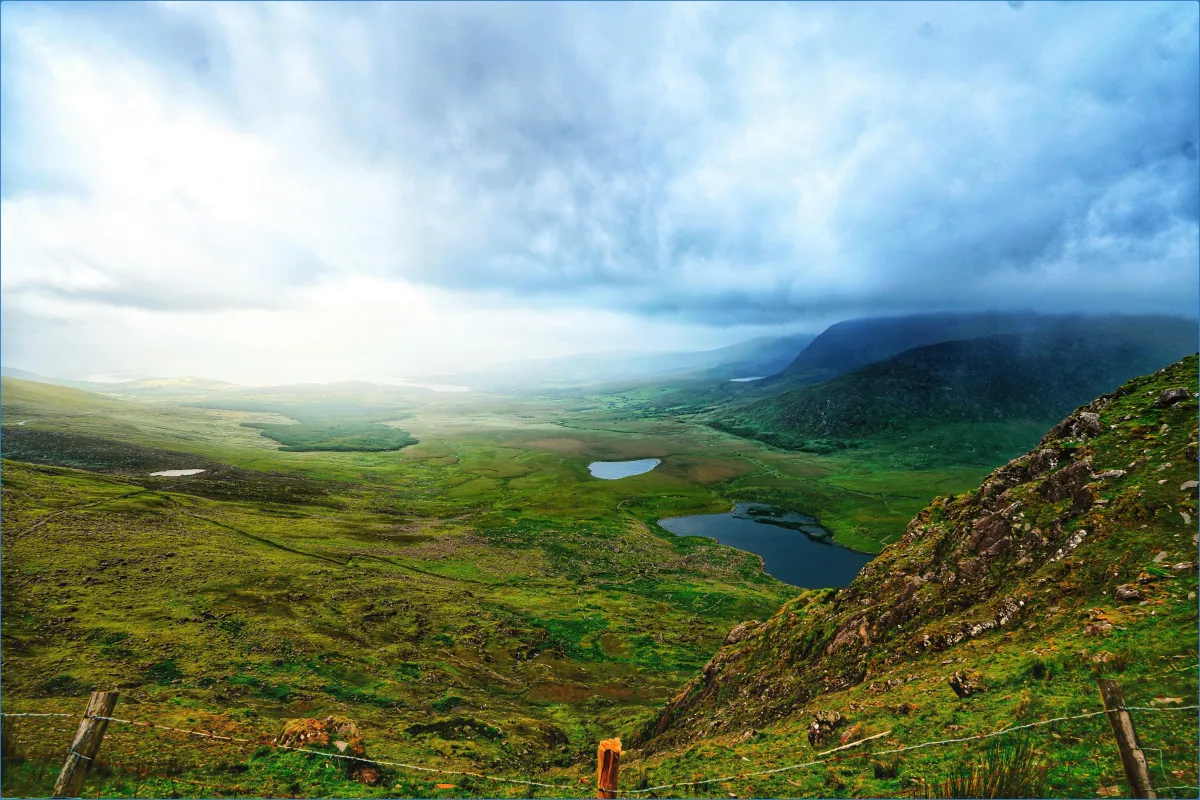
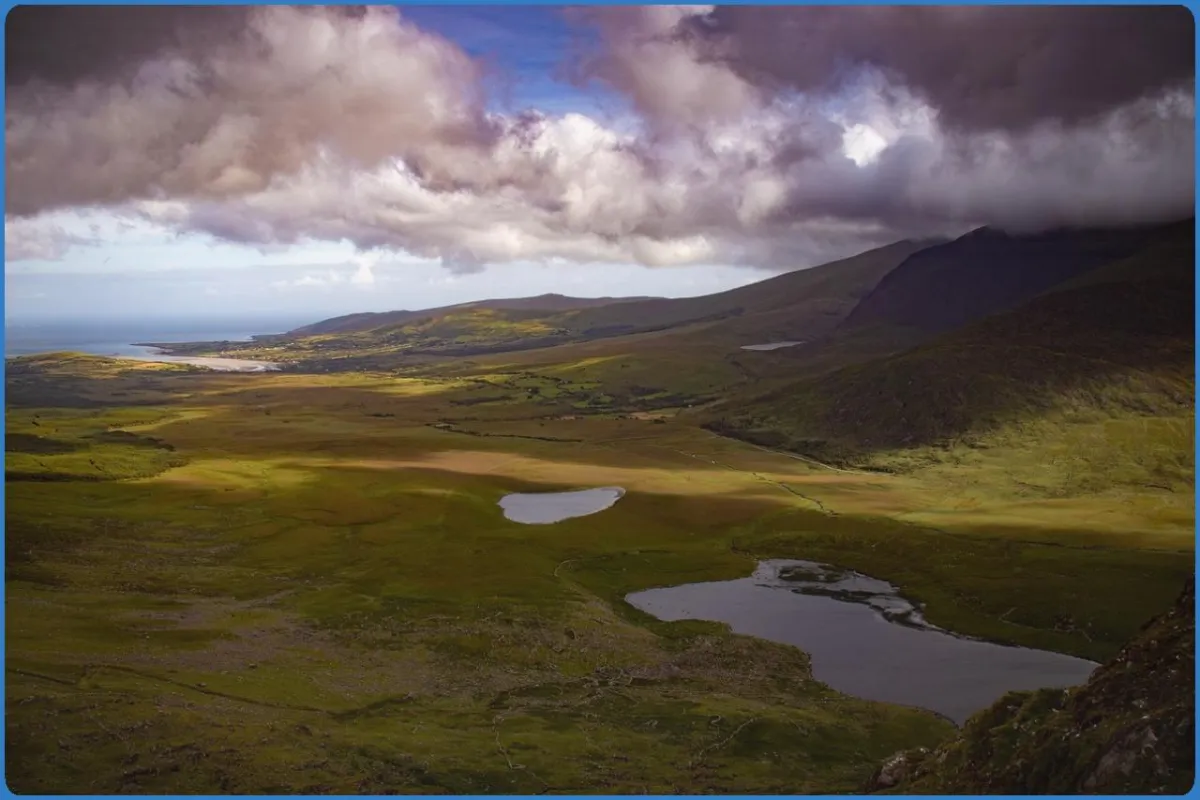
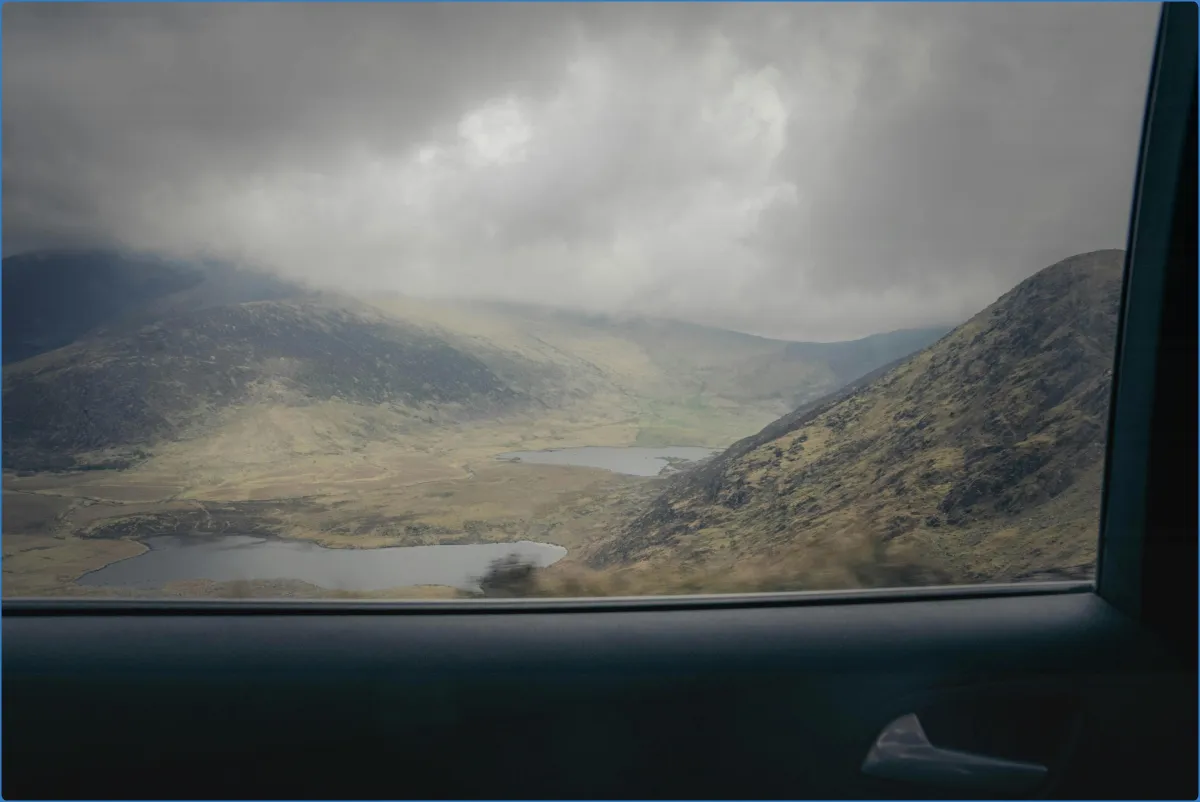
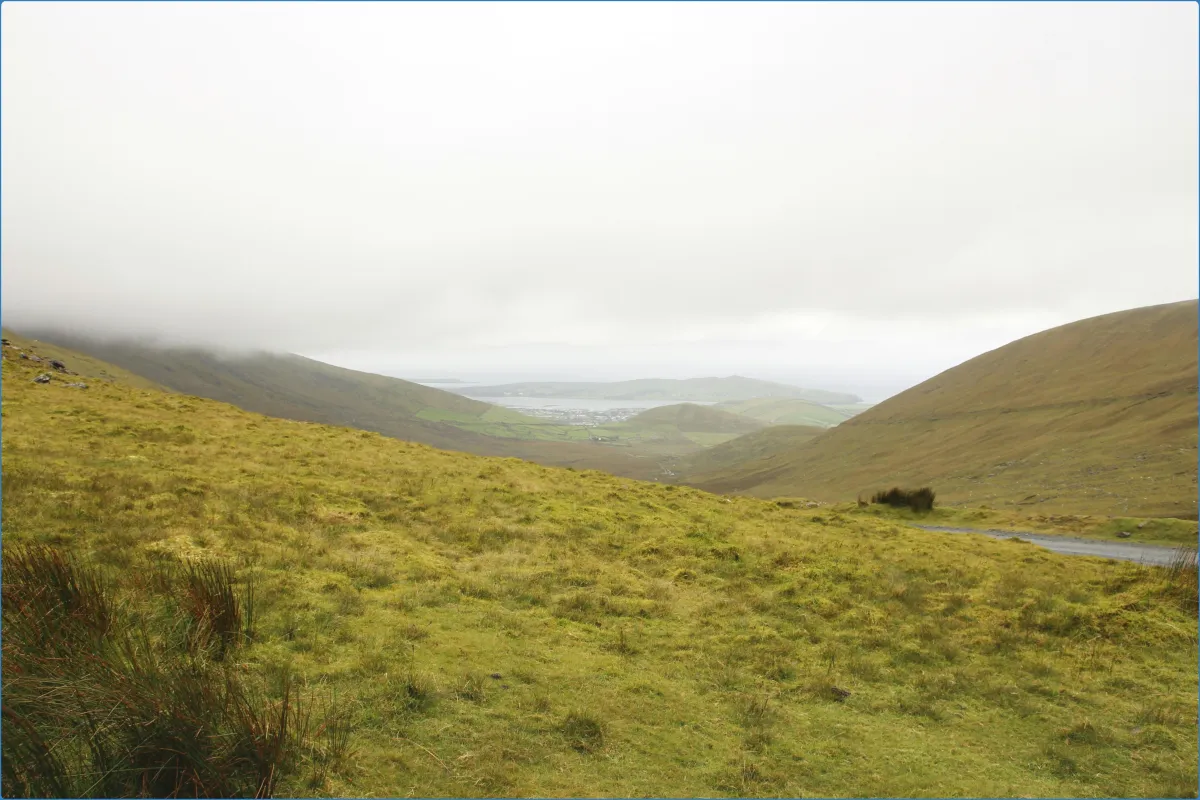
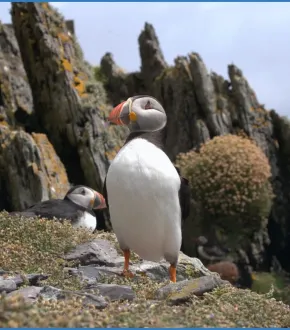
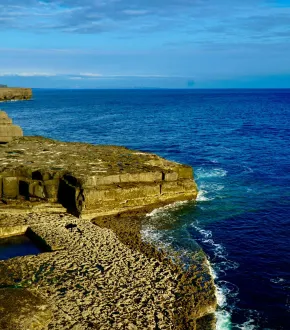
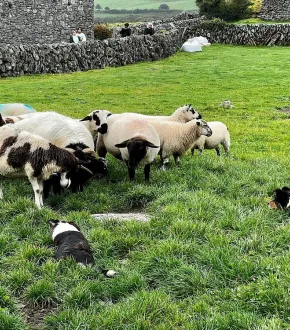




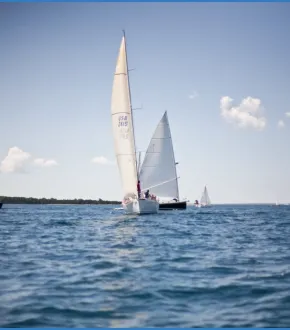
Comments